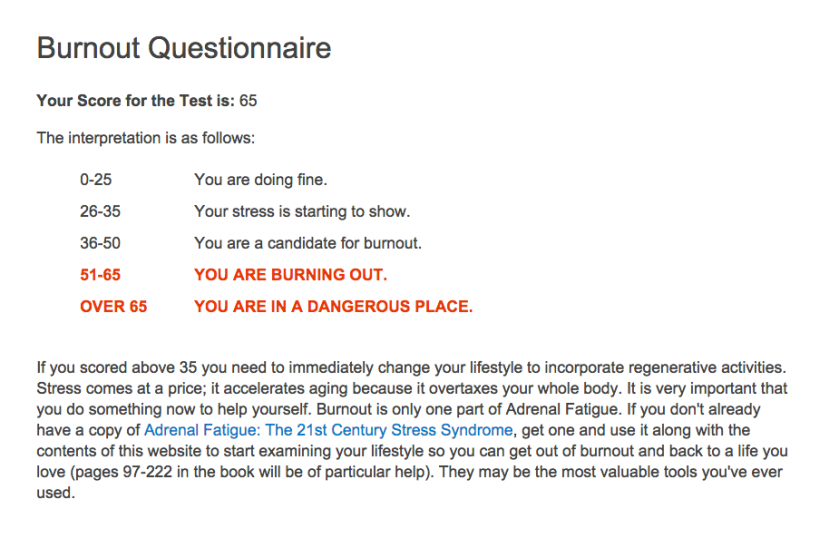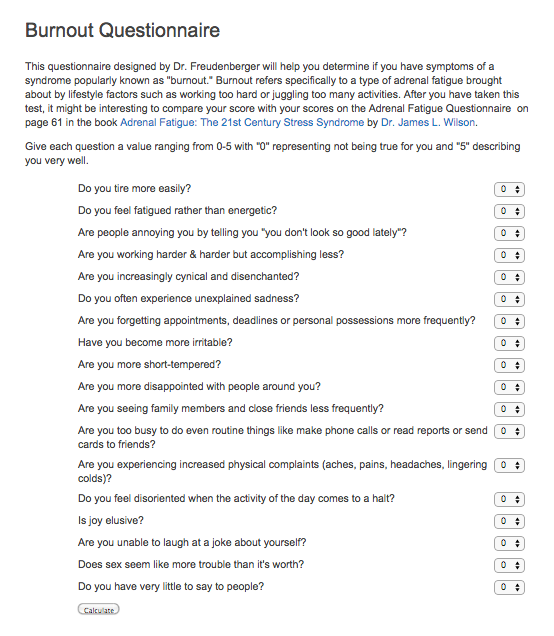Job burnout
Burnout is measured using three terms: exhaustion, depersonalisation (cynicism), inefficacy.
‘Exhaustion is not…simply experienced—rather, it prompts actions to distance oneself emotionally and cognitively from one’s work, presumably as a way to cope with the work overload…Overwhelming demands that contribute to exhaustion or cynicism is likely to erode one’s sense of effectiveness. Further, exhaustion or depersonalization interfere with effectiveness: It is difficult to gain a sense of accomplishment when feeling exhausted or when helping people toward whom one is indifferent.’
The Maslach Burnout Inventory (MBI) is used to measure burnout. Research using this tool suggests that burnout is related to anxiety and depression. However, research has differentiated the problems by suggesting that burnout is related to work specific, whereas depression usually affects personal life also.
Maslach & Schaufeli (1993) conceptualised burnout using five common elements:
- Dysphoric symptoms such as mental or emotional exhaustion, fatigue, and depression dominate.
- Mental and behavioural symptoms are more prominent than physical ones.
- Burnout symptoms are work-related.
- Symptoms occur in “normal” persons who did not previously suffer from psychopathology.
- Negative attitudes and behvaviours lead to decreased effectiveness and work performance.
Two theories for who experiences burnout:
- Best and most idealistic workers are most likely to experience burnout – ‘you have to have been on fire in order to burnout’.
- Continual exposure to chronic job stressors leads to burnout – it occurs later in the career rather than earlier.
Generally believed that burnout is a response to overload, especially in terms of exhaustion. So what started out as pleasant and fulfilling becomes unpleasant, unfulfilling and meaningless. Enegery becomes exhaustion, involvement becomes cynicism, and efficacy turns in to ineffectiveness.
Maslach, Christina, Wilmar B. Schaufeli, and Michael P. Leiter. “Job burnout.”Annual review of psychology 52, no. 1 (2001): 397-422.

